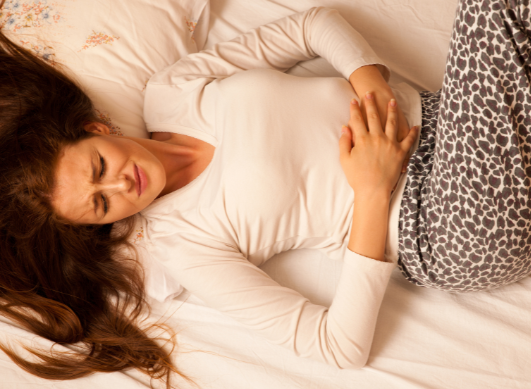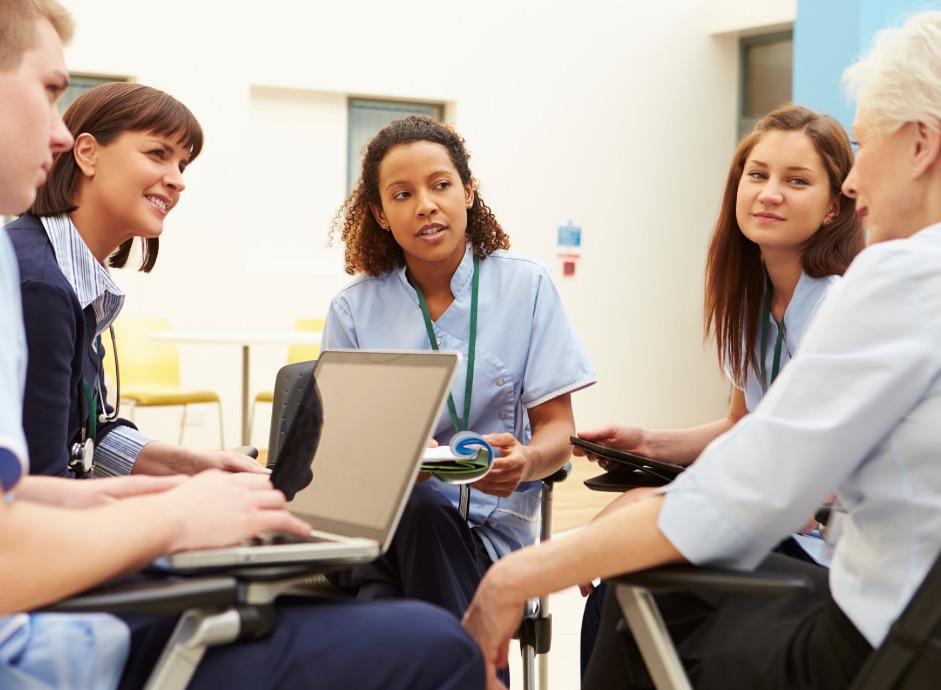Endometriosis and pregnancy: What is the outlook for affected women?
Published 16 Jun 2021 • By Aurélien De Biagi
Endometriosis is a little-known gynaecological condition that affects one in ten women. The main complication of this condition is infertility, which affects 30 to 40% of women living with endometriosis.
What is endometriosis and its symptoms? How is it treated? What are the fertility options for women with endometriosis looking to become pregnant?
We explain it all in our article!

What is endometriosis?
Endometriosis is a common but still little known gynaecological condition. It affects approximately one in ten women. Endometriosis is an oestrogen-dependent condition, which means that it depends on the level of hormones (in this case oestrogen). It therefore appears in women of childbearing age, sometimes as early as adolescence, and regresses at menopause.
This condition is characterised by the presence of endometrial tissue (endometrium) outside the uterus. During menstruation, the endometrium is shed due to the effect of hormones. However, in the case of endometriosis, the endometrium is not properly expelled - it migrates into neighbouring organs such as the ovaries, vagina, fallopian tubes, rectum, colon, bladder, etc. In rare cases, more distant organs are involved, such as the lungs or the brain.
What are the symptoms of endometriosis?
Endometriosis can be completely asymptomatic. However, when it is not asymptomatic, the main symptom is pain. This pain may occur in the pelvic (lower abdomen), lumbar (lower back) or abdominal area and may be present at all times. Though, in most cases, the pain coincides with the menstrual cycle. The intensity of the pain is not, however, correlated with the size of the lesions, since it may due to the lesions themselves (mainly the depth of the lesions in the affected organs) but may also be due to the inflammation caused or the nerve damage.
The pain is often debilitating and limits a woman in her daily activities. It is often exacerbated during menstruation, which is referred to as dysmenorrhoea (painful menstruation). In addition, pain during sexual intercourse (dyspareunia) can occur.
Other symptoms can be observed, such as:
- Dysuria (pain during urination)
- Haematuria (blood in the urine)
- Blood in the stool
- Pain during a bowel movement
How does endometriosis progress?
Endometriosis develops during a woman's reproductive years (from adolescence to menopause). During this time, new lesions are formed, causing bleeding and leaving fibrous scar tissue.
The most common complication of endometriosis is infertility. Infertility usually occurs as a result of lesions in the fallopian tubes, ovaries or peritoneum (membrane surrounding the organs in the abdomen and pelvis). Endometriosis is often diagnosed during fertility testing.
What are the treatment options for endometriosis?
There are two main treatment options for women with endometriosis: surgery and hormone therapy.
Hormone therapy
Apart from painkillers, medications aiming to lower the quantity of oestrogen in the blood may be prescribed.
For example, an oestrogen-progestin treatment (contraceptive pill), danazol (suppresses ovulation and induces hypooestrogenism or oestrogen deficiency), or a hormonal IUD delivering levonorgestrel or progestin (Mirena®, for example) can be used. These hormonal treatments can stop the progression of lesions, but they do not allow them to be complete eliminated.
Surgical treatment
In case hormone therapy is not effective, surgery is possible. A distinction is made between conservative surgery (which aims to preserve the affected organs) and radical surgery (removal of the uterus and/or ovaries). Surgery remains the only treatment capable of permanently removing the lesions.
First, surgery is used to assess the extent and nature of the lesions. Subsequently, the lesions are destroyed (by coagulation or laser vaporization) or removed. Most often the operation is performed under laparoscopy in order to limit complications and postoperative effects.
Once the procedure is completed, hormonal treatment is started if there is no desire to become pregnant.
Endometriosis and pregnancy: What is the outlook for women looking to become pregnant?
In more than half of cases, endometriosis does not cause infertility. However, this complication occurs in approximately 40% of women with this condition. If there is a desire for pregnancy, there are several possible options.
The first option is surgery. If conservative surgery is possible, then removal of the lesions allows the patient to have a natural pregnancy. It should be noted, however, that depending on the extent and nature of the lesions, the delivery may be performed by caesarean section.
Fertility treatment (using assisted reproductive technology (ART)) is another option. ART involves a number of procedures, the most common of which is in vitro fertilization (IVF). Following hormonal stimulation, the patient's oocytes (eggs) are retrieved. One of them will be fertilised, in vitro (in a lab), by a sperm cell from the father. The remaining oocytes are cryogenically preserved. Once the oocyte is fertilised, the resulting embryo will be transferred to the mother's uterus. Before the age of 35, the probability of success with this technique is just under 30%. However, this probability decreases with age. By the age of 38, the probability is only about 15%.
Was this article helpful to you?
Share your thoughts and questions with the community in the comments below!
Take care!
Comments
You will also like

Endometriosis and digestive issues: Understanding causes and symptoms for better relief!
23 Oct 2024

 Facebook
Facebook Twitter
Twitter

